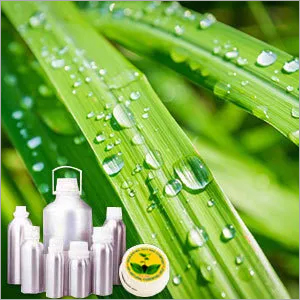Jamarosa Oil
 | Botonical Name | : | Cymbopogon Nardus |
 | CAS # | : | 8014-19-5 |
 | Country of Origin | : | India |
 | Color & Odor | : | Pale yellow liquid with a rosy-grassy odor |
 | Solubility | : | Insoluble in Water, Soluble in Alcohol and Oils |
 | Specific Gravity | : | 0.850 - 0.899 @ 20°C |
 | Optical Rotation | : | -20 - +20 @ 20°C |
 | Refractive Index | : | 1.468 - 1.474 @ 20°C |
 | Flash Point | : | >100 °C |
 | Major Constituents | : | Geraniol & geranyl acetate. |
 | Plant Part Used | : | Grass |
 | Extraction Method | : | Steam Distillation |
DESCRIPTION:
Jamarosa Oil is procured from Jamrosa, that is a hybrid between two fragrant grasses, Palmarosa and Citronella. The oil is procured from the root part of jamarosa plant through steam distillation process. Largely composed of a blend of geraniol and geranyl acetate, this oil is widely sought after as a natural fragrance. This oil is non-toxic, non-sensitizing and very popular for it's appealing rosy-grassy odor. It is a pale reddish yellow liquid with medium consistency.CONSTITUENTS:
Geraniol and geranyl acetate. AROMATIC SUMMARY / NOTE / STRENGTH OF AROMA:
A middle note with a medium aroma, Jamarosa Oil has a sweet rose like grass scent with a terpenic note. With Botanical Name, Cymbopogon nardus, it is less sweet & rosy in comparison to Palmarosa Oil. BLENDS WITH:
Palmarosa, Rose Geranium, Geranium, Gingergrass & Juniper Berry.COMMON NAMES:
Jamarosa OilUSES:
1. Jamarosa essential oil regulate skin moisture & sebum production2. Can restore luster to dull aged skin and remove wrinkles & other signs of ageing
3. Has disinfectant, antiseptic properties and widely used for treating insect bites and as insect repellents
4. Aids in repairing of the damaged skin cells
5. Fights anxiety, stress and promotes peaceful sleep



































